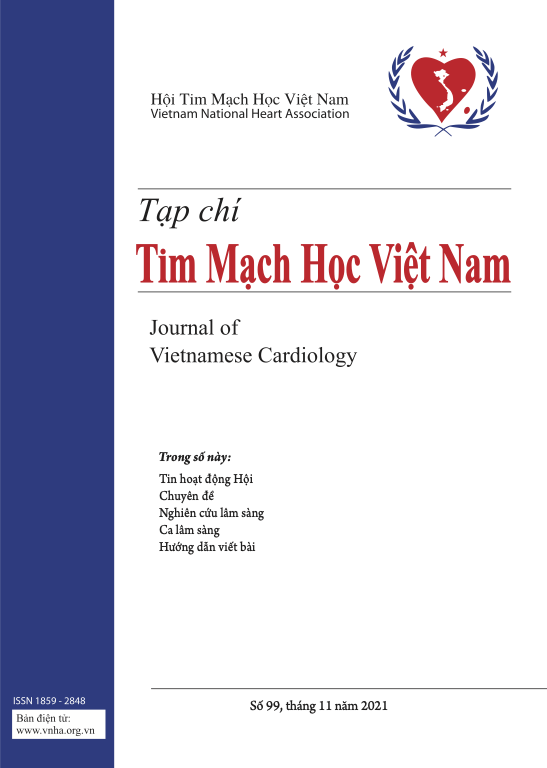Cấy máy tạo nhịp tái đồng bộ cơ tim ở người bệnh suy tim nặng có tĩnh mạch chủ trên trái đổ trực tiếp vào nhĩ phải
DOI:
https://doi.org/10.58354/jvc.99.2022.14Tóm tắt
Cấy máy tạo nhịp tái đồng bộ cơ tim ở người bệnh suy tim nặng có tĩnh mạch chủ trên trái đổ trực tiếp vào nhĩ phải
Tài liệu tham khảo
1. Ponikowski P., Voors A.A., Anker S.D., et al. (2016). 2016 ESC Guidelines for the diagnosis and treatment of acute and chronic heart failure: The Task Force for the diagnosis and treatment of acute and chronic heart failure of the European Society of Cardiology (ESC)Developed with the special contribution of the Heart Failure Association (HFA) of the ESC. Eur Heart J, 37(27), 2129–2200.
![]()
2. Yancy C.W., Jessup M., Bozkurt B., et al. (2017). 2017 ACC/AHA/HFSA Focused Update of the 2013 ACCF/AHA Guideline for the Management of Heart Failure. JournaloftheAmericanCollege of Cardiology, 70(6), 776–803.
![]()
3. Bera D., Bachani N., Pawar P., et al. (2018). Cardiac resynchronization therapy device implantation in a patient with persistent left superior vena cava without communicating innominate vein - should we proceed from the same side? - A dilemma revisited. IndianPacingandElectrophysiologyJournal, 18(3), 112–114.
![]()
4. Conti S., Taormina A., Bonomo V., et al. (2018). CRT-D Upgrading in a Patient with Persistent Left Superior Vena Cava and Right Superior Vena Cava Atresia Using the Novel Active-Fixation Quadripolar Left Ventricular Lead. WJCD, 08(09), 462–466.
![]()
5. Biffi M., Massaro G., Diemberger I., et al. (2017). Cardiac resynchronization therapy in persistent left superior vena cava: Can you do it two-leads-only?. HeartRhythmCaseReports, 3(1), 30–32.
![]()
6. Bontempi L., Aboelhassan M., Cerini M., et al. (2020). Technical considerations for CRT-D implantation in different varieties of persistent left superior vena cava. JIntervCardElectrophysiol.
![]()
7. Dong Y.-X., Powell B.D., Asirvatham S.J., et al. (2012). Left ventricular lead position for cardiac resynchronization: a comprehensive cinegraphic, echocardiographic, clinical, and survival analysis. Europace, 14(8), 1139–1147.
![]()
8. Marsan N.A., Breithardt O.A., Delgado V., et al. (2008). Predicting response to CRT. The value of two- and three-dimensional echocardiography. Europace, 10Suppl3, iii73-79.
![]()
9. Bonakdar H.R., Jorat M.V., Fazelifar A.F., et al. (2009). Prediction of response to cardiac resynchronization therapy using simple electrocardiographic and echocardiographic tools. Europace, 11(10), 1330–1337.
![]()
Tải xuống
Đã Xuất bản
Các phiên bản
- 06-03-2023 (2)
- 30-11-2022 (1)








